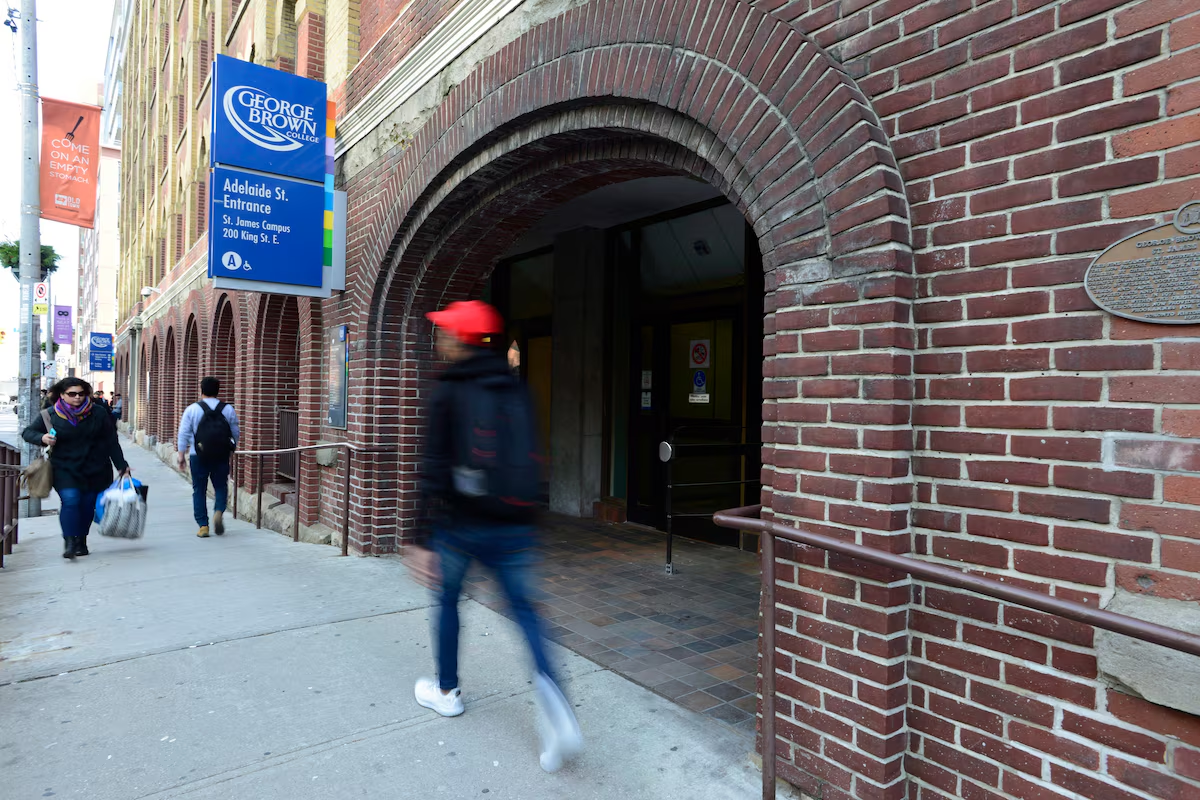George Brown College changes name to stand out in crowded higher-education marketplace

Open this photo in gallery:
George Brown is one of the largest of Ontario’s 24 publicly funded colleges and has about 30,000 full-time students.Doug Ives/The Canadian Press
George Brown College is changing its name in order to differentiate itself in a crowded, and financially strained, higher-education marketplace.
The school’s new name will be George Brown Polytechnic. It plans to make the announcement Thursday morning.
It’s the third Ontario college to embrace the polytechnic name in the past two years, a time when the province’s colleges have been battered by cuts to international enrolment, program closings and job losses.
George Brown president Gervan Fearon said the polytechnic designation better suits the range of educational programs that the school offers.
Canada’s postsecondary system must pivot to meet economic challenges ahead, RBC report says
Being known as a college, “no longer speaks to the full scope of what we do,” Dr. Fearon said.
“This name change allows us to really communicate to learners and to employers that we’re providing opportunities for training and development, and we’re also providing the kind of graduates that are job-ready, because of our work-integrated learning and our co-op programs.”
George Brown is one of the largest of Ontario’s 24 publicly funded colleges. It has about 30,000 full-time students and well-known programs in disciplines such as culinary arts, design, early childhood education and construction management.
In addition to the typical college offerings of two-year diplomas and one-year certificates, George Brown also confers four-year bachelor’s degrees and conducts applied research.
As part of its rebranding, George Brown is announcing plans for its first applied master’s degree program, in construction management. It will open in September, 2026.
Seneca and Humber, two other large schools in the Toronto area, have also recently adopted the polytechnic name. On its website, Seneca said polytechnic captures the combination of academic rigour, professional skills and real-work exposure that it aims to offer students.
Opinion: The student-as-customer model is an expensive lie that burdens Canadian universities
“Unfortunately, unlike the word ‘university,’ which is protected by government, ‘college’ can be adopted by virtually any organization, including the for-profit private career colleges that confuse the marketplace,” the Seneca announcement said.
In recent months, the college sector has been hit by several waves of bad news. It began with the federal government’s January, 2024, announcement that cut the number of study permits issued to international students by more than one-third.
International students have been a major source of revenue at colleges, and most schools responded over the next several months by announcing large layoffs and program closings.
According to a tally by labour mediator William Kaplan, more than 8,000 jobs have been lost and more than 600 programs closed or suspended at Ontario’s colleges. In addition, the sector just came through a five-week strike by support staff who were seeking greater job security, among other demands.
The pain from the policy change on international students has also hit colleges outside Ontario, where hundreds of jobs have been lost.
Sarah Watts-Rynard is the chief executive of Polytechnics Canada, a national lobby group that represents 13 schools, including the British Columbia Institute of Technology, B.C.’s Kwantlen Polytechnic University, Saskatchewan Polytechnic, Red River College Polytechnic in Manitoba, as well as two schools in Alberta and seven in Ontario.
Is AI the learning tool of the future, or should we be worried about its use in higher education?
She said the movement toward polytechnic branding emphasizes their distinct characteristics, such as their size and research capacity, at a time when smaller, private schools are using the college name.
“These are institutions that have started to say we need to be able to stand out in a very crowded field,” she said.
She added that it’s not as though the cuts and program closings aren’t affecting the polytechnics, too, but they have the size and strength to survive.
“When you talk about strip-mall colleges, you’re not talking about us. We’ve got a big footprint and we’re going to weather the storm,” she said.
George Brown’s Dr. Fearon said the school will change its signage and branding over the next few years, within existing budgets.
The school is named for George Brown, founder and editor of The Toronto Globe, established in 1844 and a forerunner of The Globe and Mail.





